Wellness Interior Design – Part 1
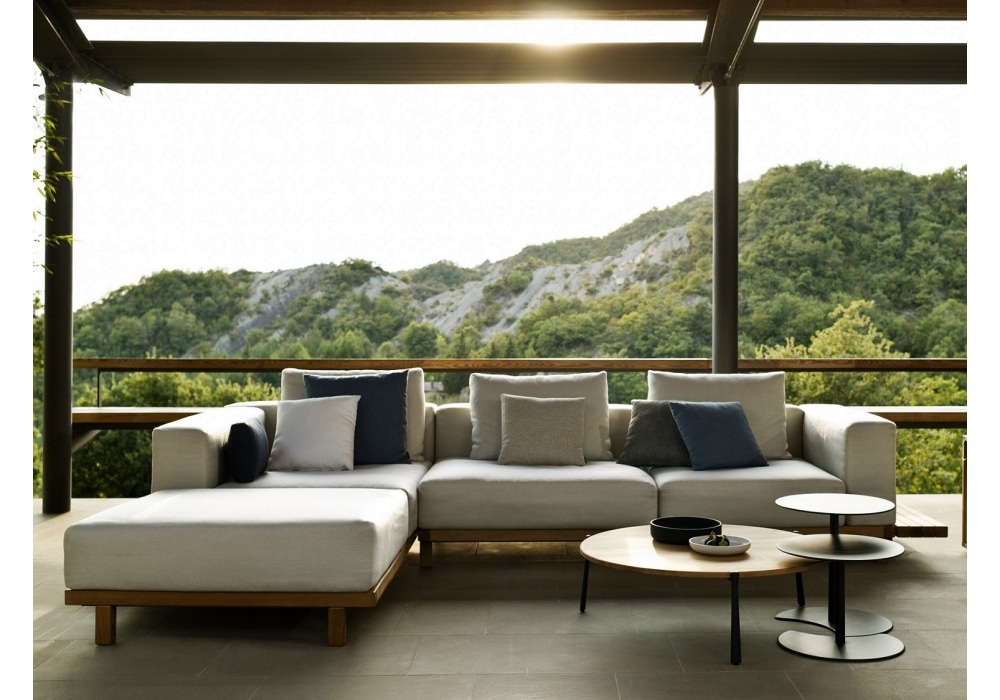
Wellness Interior Design is growing in importance and set to be a big home interiors 2020 trend. Find out more with our home wellbeing improvement tips.
The trend has grown out of the pressures of 21st-century life. This leaves us feeling tired, stressed and anxious. Combined with not having enough time for exercise and family life, all impacted by spending too much time on technology.
Did you know however that interior design can make up part of the solution? Recent studies by global movement the Well Building Institute show the importance of interior design and how it can be used to improve our physical and mental wellbeing. At Interior Folk we are using this study’s findings and putting it into practice. As a result, we find that our projects are benefiting from harnessing the power of lighting, colour, and nature and our client’s are feeling the positive impact. Here are my wellness interior design tips that you can introduce into your home, to foster good health and create places to switch off, relax and sleep well within.
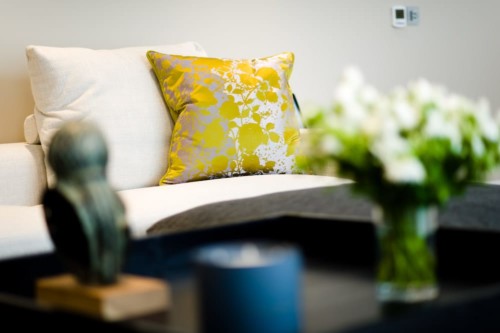
Wellness design by Interior Folk
Nature and bringing the outdoor in
Scientists have quantified what we all instinctively know that being in the great outdoors makes us happier and healthier. Being in green landscapes, nature walks and even ‘forest bathing’ have had a lot of press. Studies show that spending one hour in nature significantly reduces our cortisol levels and therefore the amount of stress we are feeling. It has also been shown in studies that a connection with nature promotes the well-being – both a physical and mental.
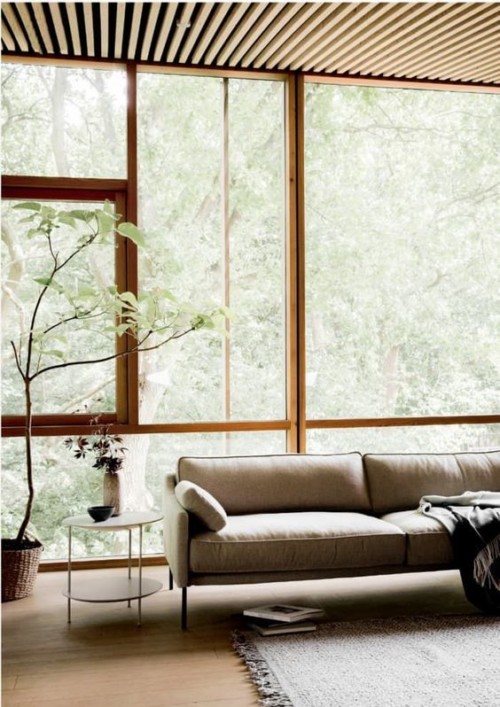
Connecting with nature
Biophilic design uses this knowledge and works to revitalise our connection with nature and bring the outside in. Incorporating views of the green exterior into your interior design is the first place to start if you are refurbishing.
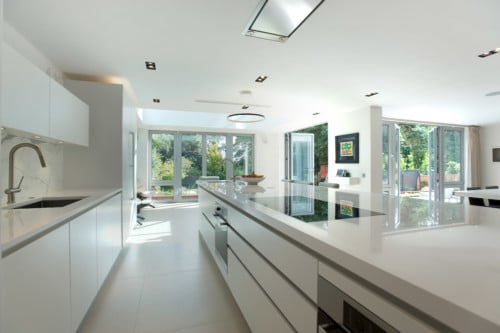
Interior Folk we designed this space to incorporate views of nature
Using plants is the simplest way to start. Create an area where you can group together a large number of plants in order to make a green zone – hang them from the ceiling, put them on stands, shelves and tables.
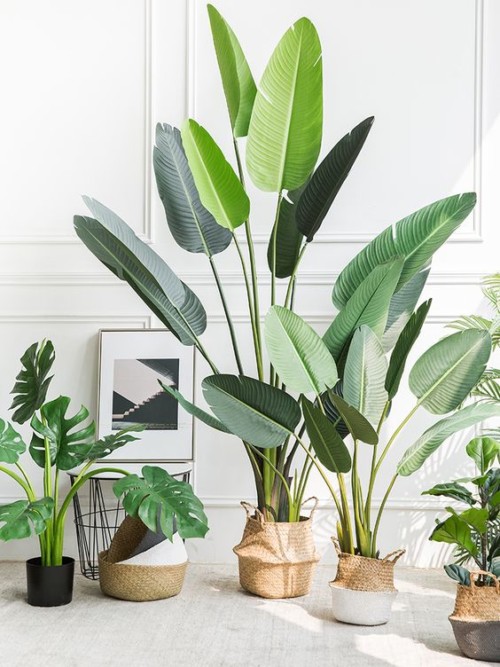
Group plants together to make green areas
Choosing plants like spider plants and those with lots of green leaves such as palms, figs, lilies will also improve your air quality and make you feel healthier.

Position chairs & plants next to your views. Interior Folk
Creating tranquil seating areas where you can take time out to look outside to see the sky and greenery also helps reduce stress levels.
Using subdued colours
It follows that the therapeutic benefits of nature can be harnessed by mimicking them inside. Start by choosing colours that reflect nature, be inspired by the sea, sky and landscapes to decorate your peaceful zone. Think carefully about the tone and saturation of these colours for example dark blue is very popular but it does have a strong impact, does it make you feel restful? Or does it conjure up a stormy sky? Consider keeping stronger greens and blues muted and using them as accents whilst mixing with lighter tones, including soft browns and warm greys. These palettes are considered calming and restful.
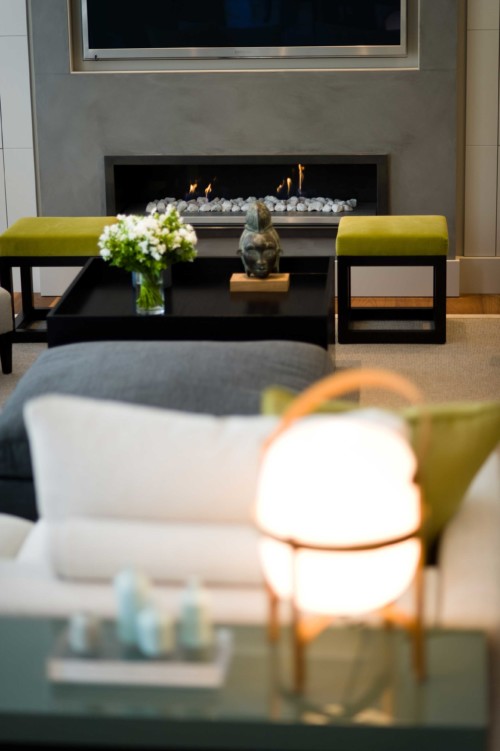
Interior Folk designing using natural colours and textures
Natural materials
Placing people’s wellness as a central pillar in the design process means considering all of the five senses – including touch. With this in mind using natural materials in the interior finishes and furnishings plays a large role.

Natural Textures Mood Board by Cate St Hill
By selecting finishes carefully, the tactile relationship we have with our surroundings can be enhanced, leading to feelings of comfort, reflection and connection with the natural world.
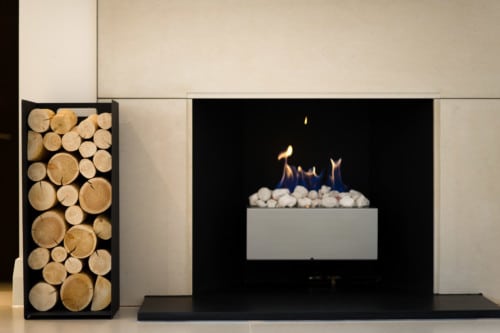
Using natural materials inside. Design by Interior Folk
I hope you can take some of these practical steps on how to design your interiors in order to achieve calm and a sense of wellness. Look out for our next post with more details on the importance of lighting and our senses.
If you are interested in wellness design within your own home do get in touch to find out more.

